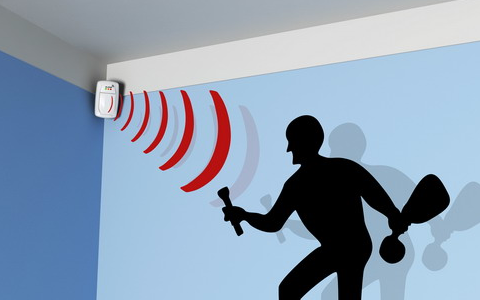Motion Sensors: From Pre-1880’s Astronomy to Our Home’s Front Door Tech Evolution
For many of us, it has become like second nature. We walk up to our front door after the sunsets and our porch light automatically turns on as soon as we approach. Convenient and effective, motion sensors have amplified our lifestyle in ways we often take for granted. Of course, unlike your motion sensor light, the tech behind motion sensors did not automatically appear to us. How do motion sensors work? Where did they come from? And how are they evolving?

First personal experience with motion sensors:
When I was a kid, my mother gifted 2 toys for me with motion sensor detectors. The first was a singing sunflower. It was battery-operated and there was a switch to turn it on. Once turned on, the motion sensor mechanism was activated. It looked like a regular sunflower planted in a pot until you walked past it, or waved your hand in front of it. Then its eyelids would lift open and the song “You Are My Sunshine,” would play automatically.
My second toy was a parrot recorder. It looked like a parrot perched on a wood rod. It was also battery-powered and it had a switch to turn it on. Once turned on, there was a separate button to record my own voice. I had to hold down the button to record it. After recording, and releasing the button, the parrot would open its eyes and its mouth repeated my own words /sound back to me, except it would repeat it using a programmed parrot voice. Although it was not motion sensor activated, this feedback loop and recording device is a good example of the way sound waves can operate and interact with devices.
How do motion sensors work?
There are three types of motion sensors. The first type of motion sensor works through ultrasonic waves, or sound waves, similar to echo-location. They emit ultrasonic pulses that reflect off of nearby objects within their range and vicinity. Then, these waves are reflected back and returned to the sensor.
The second type uses infrared technology, they can detect light and heat from humans and animals. Both can cover distance of an object but the most definitive difference is ultrasonic motion sensors use reflected sound, infrared motion sensors uses reflected light.
The third type of motion sensor are microwave motion sensors, they are capable of detecting even when placed behind solid objects and other barriers. Please read below in my section about how motion sensors evolving for a deeper look into microwave motion sensors.
To help you understand better, the first two types of motion sensors work similar to a feedback loop. They typically are only activated when there is an object within their range to bounce waves off of and then back to them. Like playing table tennis by yourself. If you hit the ball across the table towards nothing, the ball is not going to be returned back to you.
An important part of motion sensors depends on the type of motion sensor you invest in. This is about the software used to program the motion detector. Motion sensors work from feedback and therefore can be programmed to be more specific to the object(s) they are detecting.
These are all types of motion sensors known to the general public for private and personal use within the United States. The advancements in military, medical and scientific motion detection will likely supersede any tech gear being advertised to us for our homes and businesses.
Where did they come from?
Motion detection was studied thousands of years ago. Ancient civilizations stargazed, eventually calculating harvest seasons and other important natural phenomena by mapping the movement of planetary bodies. History states that Heinrich Hertz pioneered radar, creating the first motion detection system. He studied the properties of waves and discovered waves could bounce off of other objects at different speeds. In World War II, radar was being used in military strategy to detect and guide for combat.
In the early 1950’s, Samuel Bagno invented the first motion detecting alarm. He applied the basic principles of radar and the Doppler Effect to ultrasonic sound waves. The Doppler Effect is the difference in the frequency of waves of a moving object, like a train sounding louder as it gets closer.
Eventually, more studies and advancements in motion sensor technology came to be. These included infrared motion sensors and microwave motion sensors.
How are motion sensors evolving?
Microwave motion sensors uses electro-magnetic radiation combined with radio waves in a similar way to other feedback receivers. However, more advanced microwave motion sensors are capable of identifying refined changes with more precise accuracy. This includes but it is not limited to movement, such as if a person is moving closer or farther away.
Convenience and protection for your home is an important part of home ownership. We live in an era where certain technology is widely available to make our lives easier. Many motion sensor detection devices are capable of being programmed to other devices, such as cell phones and computers to record back to us in real-time any changes in our environment, even when we aren’t physically in that environment. Its best to know the types of motion sensors and motion sensor origins to have a greater knowledge on how they will impact your lifestyle in a beneficial way!